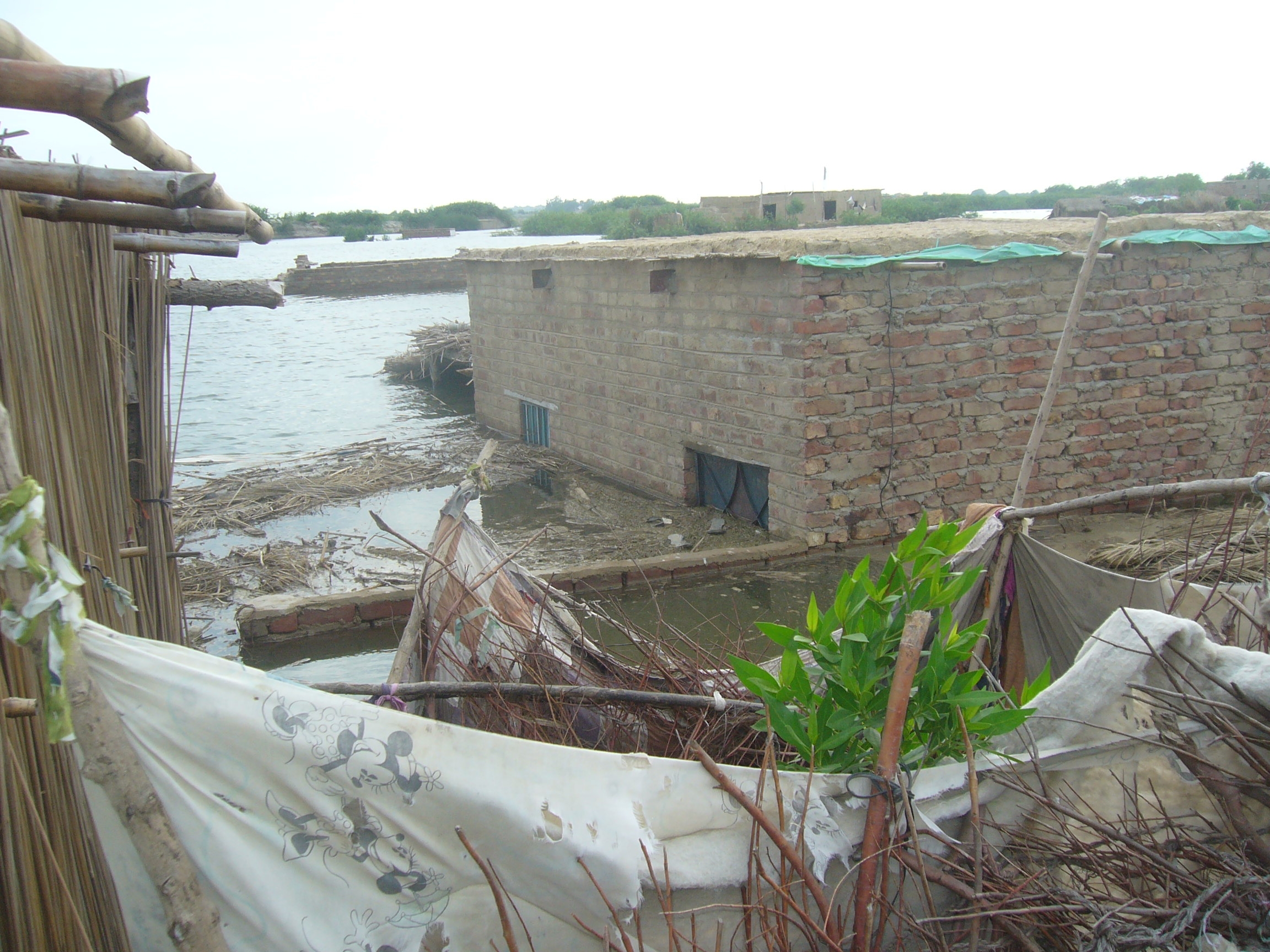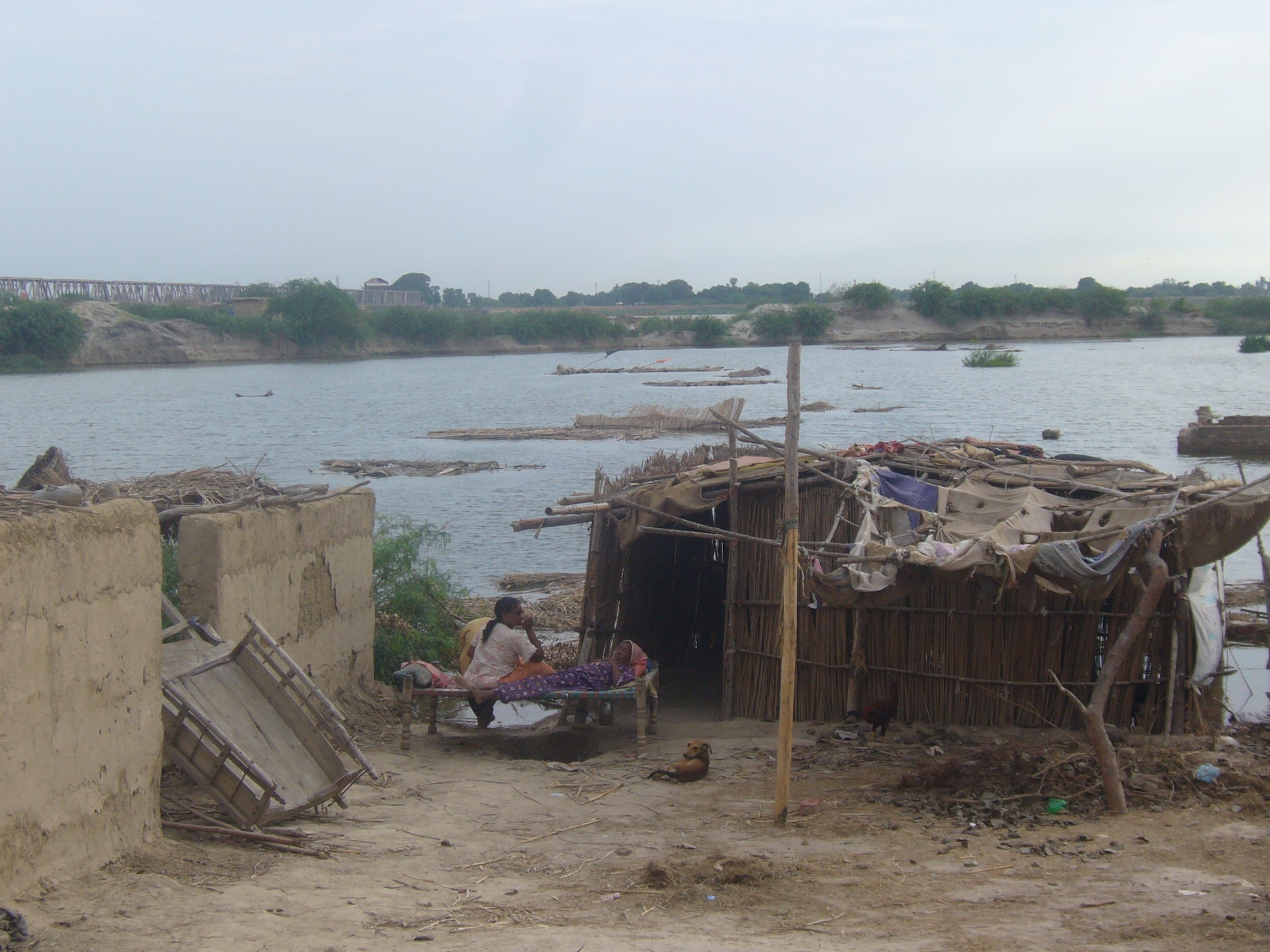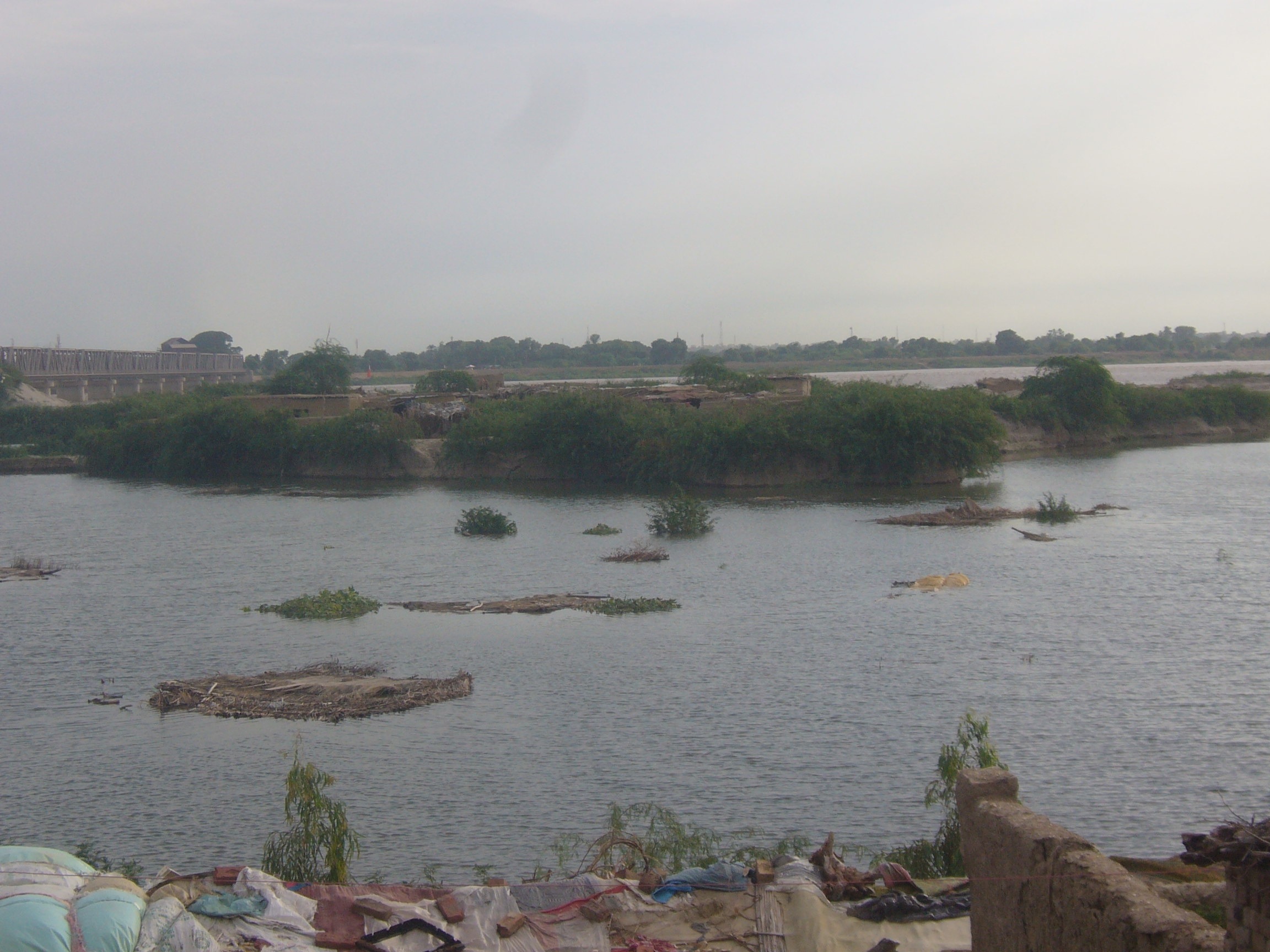Shahid Ali Panhwer
They used to live in a squatter settlement inside the river passage, disbelieving the fact that the flood approaching them downstream had reportedly killed 1,600 people, uprooted more than 20 million of the population, and left at least 2 million homeless, alongside roughly a trillion rupees worth of damage to property and businesses.
The water flow was around 125,000 cubic feet per second downstream of Kotri Barrage and the people living in the dry passage of Indus River were getting a gap between sand ridges filled with the help of an excavator. In their opinion, this would keep the waters away from their shelters. It proved to be a futile arrangement by the people – who refused to evacuate the area – and had contributed money to hiring the excavator to erect a barrier as a last resort because the government was already trying to convince them to shift into relief camps or other safer places. But barely a week or so passed before it became clear that it was an unfeasible solution, as their houses began disappearing under slowly encroaching water, when the river flow reached about 260,000 cubic feet per second downstream of Kotri Barrage.
Shahid Ali Panhwer
People of the squatter settlements along the river claimed to have purchased the plots inside the River for 1,000 to 20,000 rupees and were adamant about not evacuating the area and leaving behind their only shelter. They argued they had been living there for a long time and during that long period, no government authority had bothered to ever take notice of the formative slum village. If official regulations had been exercised in a timely manner, they argue, there would have not been any settlements with established market values for the land of these poor people and they would not have rapidly moved to the riverbed.
“Some influential people have occupied the dry land along the river and their farmers have been cultivating crops for a long time. They declare ownership of the land due to their occupation, asserting they have acquired the land on lease from the government. Amid the deluge, they do not even allow residents of this slum to dig out sand from the vicinity of their self-proclaimed lands for erecting barriers against the river flow,” said Haji Mohammad Yaqoob, a resident of Sehrish Nagar, who was grazing his buffalo in the field. “How could the government grant river land to private people on a lease!!!!?” he questioned, adding that the nearby population of Sehrish Nagar was not issued any warning or given training to face any emergencies.
Shahid Ali Panhwer
The abysmal poverty of people who colonize riverbeds is lamentable, but it seems to have supplied them with a lifetime’s ability to confront unbearable conditions. Such deplorable conditions appear to provide them with enormous spiritual strength, seemingly enough to conquer such calamities. But it again points to a fallacy in the present situation. Those who avoided repeated warnings to evacuate risky areas upstream are now marooned in deep waters.
Shahid Panhwer

